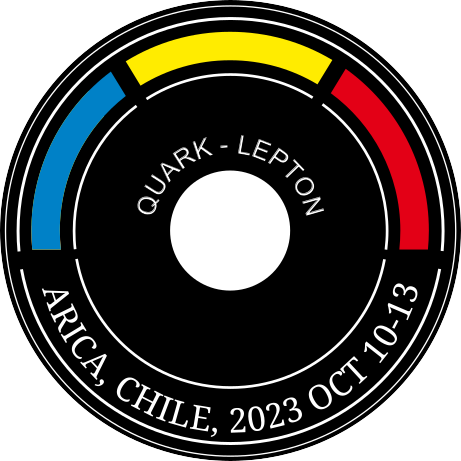Conveners
Parallel Session 3
- Takao Sakaguchi
Parallel Session 3
- Anthony Michael Hodges (Univ. Illinois at Urbana Champaign (US))
- carlos.contreras@usm.cl Contreras Hidalgo
Parallel Session 3
- Federico Ferraro
The simple picture of a hard scattering per $p$+$p$ collision has been challenged by several measurements performed at LHC and RHIC, revealing more complex dynamics of multiple parton interactions (MPI), which are essential to fully understanding particle production in hadronic collisions. Hard probe measurements at different particle multiplicity regimes in $p$+$p$ collisions provide a clean...
When investigating the characteristics of the Quark-Gluon Plasma (QGP) formed in relativistic heavy ion collisions, it becomes imperative to categorize events based on the QGP's size and configuration. Conventionally, event categorization hinges on the dimensions and form of the QGP, achieved through the indirect mapping of the unobservable impact parameter onto a bulk observable, such as soft...
Forward and backward rapidity regions are rich laboratories to explore several effects which happens to a probe before and after its hard scattering. The large rapidity region may also test a different dynamics for strangeness enhancement seen in heavy ion collisions at RHIC and LHC. The PHENIX experiment has a long history of large rapidity measurements with the muon spectrometers...
In the preparation period for precision measurements in the newly planned collider experiments, the understanding of the 3D structure of hadron is becoming increasingly urgent. This triggers the activities to include elements of Transverse Momentum Dependent (TMD) factorization physics in Monte Carlo event generators.
The method designed especially to address this need is the TMD Parton...
The Parton-Branching method (PB) is a powerful tool for determining Transverse Momentum Dependent (TMD) parton densities across a wide range of transverse momentum ($k_T$). It provides insights into both intrinsic parton motion and the contribution of soft gluons, particularly in the small $k_T$ range. Our research emphasizes the significance of soft gluons operating below a resolvable scale...
Latest heavy ion results from PHENIX at RHIC (invited)
Recent results from the STAR experiment at RHIC
Probing the Quark-Gluon Plasma with the sPHENIX Detector at RHIC
In this talk I will present the homotopy method for solving the non-linear evolution Balitsky-Kovchegov equation.
In this approach we need first the analytical solution for the linearized version of the non-linear BK evolution equation deep in the saturation region. Then, the perturbative procedure is suggested to take into account the remaining parts of the non-linear corrections. This...
